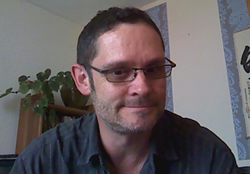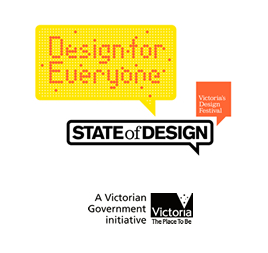 |
 |
|
Both a performative experiment and a design challenge, this project invites you to make a meaningful commitment, provoking others to do the same. Featuring commitments by: Naomi
Ota Be inspired to share what stimulates and motivates you to design the future we will experience together. Join the Facebook group to participate or keep updated through the mailing list. I shall try to see, feel and appreciate invisible beauties. And will create visibles with this invisible preciousness.
NAOMI OTA is a fibre installation artist based in Melbourne, Australia. Her work is a complex cross-over between textile and contemporary art. Her field also extends into theatrical installations. Ota has been working with a dance performance/installation unit, Tony Yap Company as a core member. Her understanding of culture as a native of Japan and her international experience as a professional artist have both contributed a unique cultural context to the discipline. // TOP Today I
make a personal commitment to the future we design together
STANLEY ARCHIBALD, who has 30 years hairdressing experience in both Australia and New Zealand, has designed and produced a range of hand made chemical-free hair care products for his clients for the past ten years. Fusing design sophistication with environmental responsibility, their collection of hair care products offers conscience free hair care. Archibalds’ shampoos, conditioners and styling products are chemical free, essential oil based and are packaged in eco-friendly recyclable containers. Archibalds' commitment to a sustainable future extends to their salon services, which include chemical free hair colouring and natural based treatments. // TOP I am committed to design and recycle new and old objects that I use daily in my life. The door handle made of mice is a reaction to my husband's obsession with new IT stuff. We have a lot of computer parts that he likes to combine and change. He buys a lot of mice and I wanted to use them, rather than throw them away. The mouse seem to be the access to new spaces online, opening new windows, like door handles open new doors. This was also part of a submission to a Lockwood competition. Also , it wasn’t a winner, but I was flattered when the organisers sent me a mini-mouse and USB as a complimentary gift. I think they liked my idea. Now it is the door handle of our laundry door. // TOP A future where architectural fiction may be identified and enjoyed.
SIMON THORNTON was born in 1953, studied architecture at the University of Melbourne and is a partner of Simon and Freda Thornton Architects. He has taught Design at Deakin University and has written occasionally on architecture and heritage issues. Simon established the Architectural Fiction Association, and a blog, to develop a theoretical basis for a type of architecture which may be called ‘architectural fiction’ or ‘fiction (or fictive) architecture’. In the same way that a novel is a fictional text, (a pretence), it is possible that a building can be a work of fiction. An example from his own work is a house called The Aqueduct and Tent House which is a copy (in timber) of an aqueduct with (metal) tents ‘hanging’ off it. Thematically it addresses issues of permanence and ephemerality, heaviness and lightness, repetition and uniqueness, birth and death – in a way which is similar to Milan Kundera’s novel ‘The Unbearable Lightness of Being’. Simon hopes to bring together architects who are interested in architecture based on imitation, pretence, trickery and playful deception, as an alternative to most non-fictive architecture which may be categorised as clear, honest, sincere and didactic. // TOP To design less, and by using fewer resources. To not pursue design problems that are not, in fact, pressing problems. For instance, to talk eager clients out of unnecessary extensions and frenzies of home improvement. To make the project of home a simple one that unfolds slowly with time. To address real problems by way of discrete interventions, and not through grandiose gestures. To think more, and to activate thinking as a potential form of ethico-aesthetic engagement. To invent new forms of sociability and new potentials for collective enunciation. To think collectively toward the resolution of shared problems – the shared problems that also divide us. Dr HÉLÈNE
FRICHOT is a senior lecturer in the Program of Architecture, // TOP I started out studying Architecture and Critical Theory because I was interested how we incorporate Architecture into our world. I am now intrigued how Architecture incorporates us into the world and by whose devising.
PAUL COOK
started studying Architecture at the Georgia Institute of Technology
before transferring over onto studying Religion, Philosophy, and
Theology with a minor in Behavioural Science. His work since then
has gone onto embrace diverse spheres including having studied at
the Desmond Jones of Mime and Physical Theatre for two years and
working within several alternative theatre companies. It has also
bridged working with fringed alternative sub-cultures within our
current Western Society including living along side the New Travellers
within Britain for a year and a half. He has recently returned to
formal studies at the University of Nottingham to pursue a degree
in Architecture and Critical Theory. In so doing he hopes to take
up Henri Lefebvre’s challenge to reintegrate Architectural
Space within the larger category of Social Space to protect it from
being sliced off into Reductionism [Henri Lefebvre, The Production
of Space, p.104]. Be inspired to share what stimulates and motivates you to design the future we will experience together. Join the Facebook group to participate or keep updated through the mailing list. // TOP
|
|





